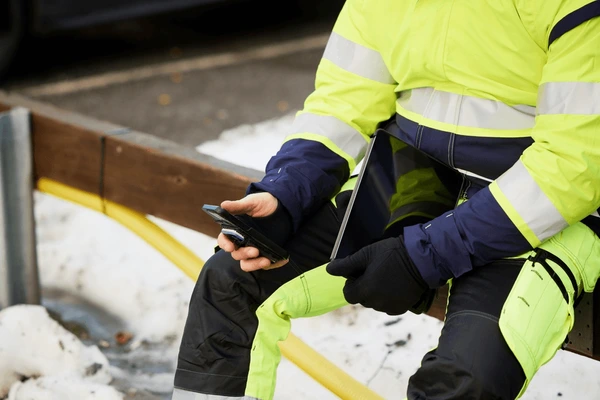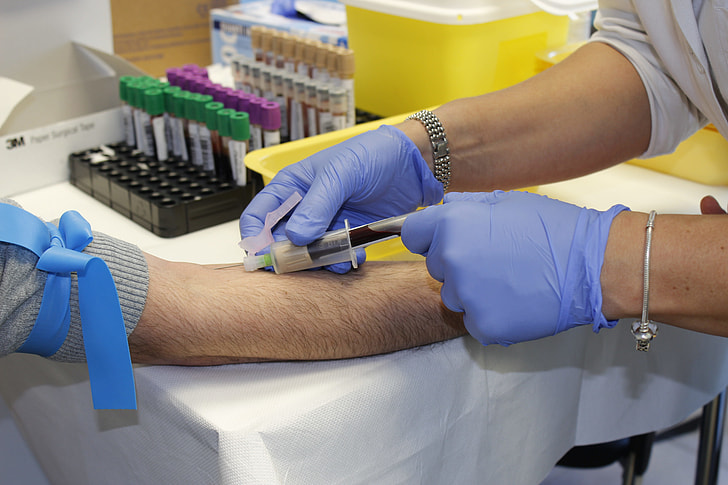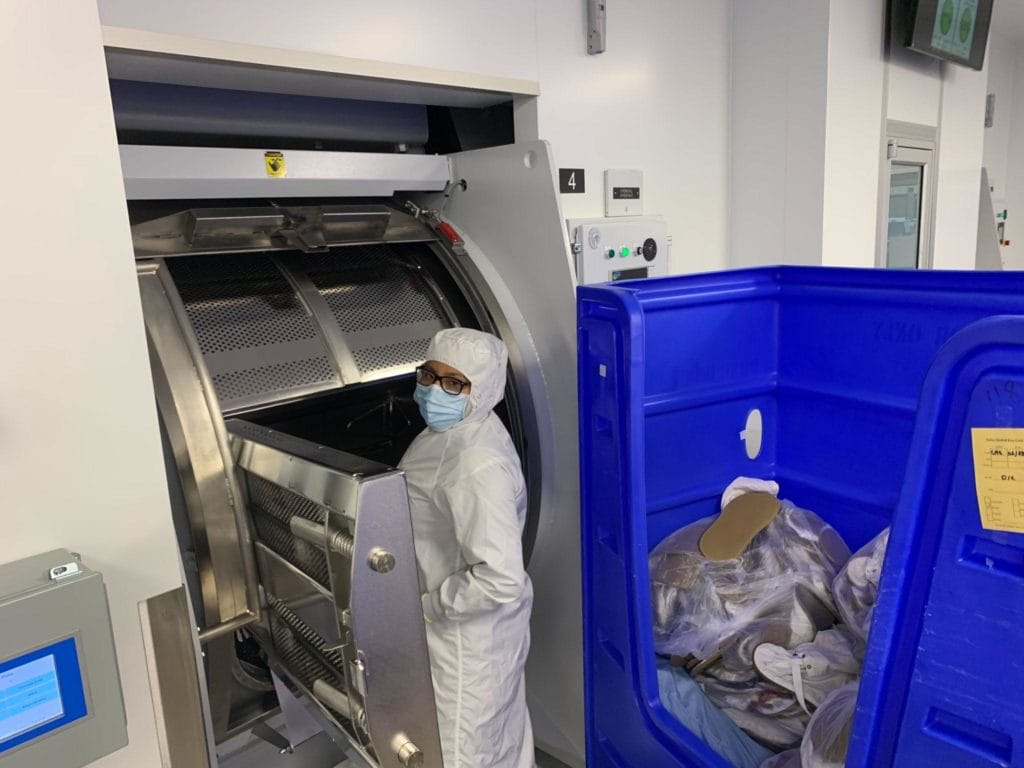
The pandemic permanently changed expectations for workplace hygiene across food processing, healthcare, manufacturing, retail, utilities, logistics, and public service industries. PPE is no longer just about protection from physical hazards—it is now a core element of infection control, supply-chain resilience, labor productivity, and regulatory compliance.
This comprehensive guide outlines:
- How COVID-19 changed PPE standards
- New material technologies designed for hygiene-first workplaces
- Industry-by-industry PPE recommendations
- Procurement strategies, ROI models, and risk avoidance
- Audit-ready buyer checklists and common compliance pitfalls
The goal: help buyers, distributors, facility managers, and safety directors build a modern PPE system that protects workers and keeps businesses compliant in this new era.
📌 Google Snippet: Quick Answer
Post-pandemic PPE focuses on infection control, anti-microbial textiles, easy-sanitizing surfaces, moisture-resistant fabrics, and smarter standards for cleaning, replacement, and traceability.
Key PPE improvements include anti-viral coatings, washable waterproof fabrics, disposable hygiene layers, color-zone controls, and digital tracking of PPE sanitation cycles.
1. The Post-Pandemic PPE Shift
Before the pandemic, many industries treated hygiene as a checklist task. COVID-19 changed that forever. Three major transformations reshaped PPE expectations:
1.1 PPE Is Now Seen as Biosecurity Infrastructure
- Hygiene is now a system, not just a product.
- PPE must protect the worker, the product, and sometimes the customer.
- Facilities now require traceability, documented usage, replacement timelines, and cleaning logs.
1.2 Workplace Hygiene Is Now a Business Cost Driver
Post-pandemic, companies learned:
- Illness outbreaks shut down production.
- Worker illness increases overtime and temporary labor costs.
- Customers judge brands on cleanliness and preparedness.
This turned PPE from cost center → business continuity investment.
1.3 Regulations Tightened Worldwide
Government standards now commonly include:
- Requirements for traceable sanitation cycles
- Higher quality standards for disposable PPE
- Cross-contamination controls
- Mandatory use of color-coded protective systems
- Documentation during audits
Industries once exempt are now treated like food manufacturing and healthcare—with stricter expectations.
2. What Defines “Hygiene-First” Workwear?
Hygiene-first workwear is designed not just to protect workers, but to:
- Reduce bacterial/viral spread
- Prevent cross-contamination
- Resist liquid and aerosol penetration
- Survive high-temperature washing and disinfection
- Simplify audits and documentation
- Standardize cleanliness across work zones
Core features include:
✔ Anti-Microbial/Anti-Viral Surface Treatments
Nanotech coatings and silver-ion finishes reduce surface microbe load.
✔ Smooth Surfaces for Fast Sanitization
PVC, PU, and silicone surfaces resist:
- Grease
- Blood
- Dairy fats
- Industrial dust
- Infectious droplets
✔ Color-Zone Workwear Systems
A post-pandemic trend now standard in:
- Food plants
- Hospitals
- Logistics hubs
- Warehouses
Examples:
| Zone | Meaning |
|---|---|
| Blue | Raw material handling |
| Yellow | Processing zone |
| Green | Packaging |
| Red | Reject/Lab |
| White | Clean-room grade |
Color systems reduce human error, now the #1 cause of hygiene breaches.
✔ Barrier Liners and Disposable Layers
Workers now commonly wear:
- Disposable under-gloves
- Disposable aprons over reusable garments
- Inner caps under outer reusable hoods
This reduces washing load and contamination transfer.
✔ Digitally Traceable Cleaning Cycles
Leading facilities now require:
- QR codes on garments
- Scan-in/scan-out laundry logs
- Replacement cycle enforcement
This protects companies during audits and investigations.
3. Pandemic Lessons That Permanently Changed PPE Standards
| Key Lesson | Post-Pandemic Rule |
|---|---|
| PPE failures create outbreaks | Must trace failures and root causes |
| “Good enough” hygiene wasn’t good enough | Standards are now audited, logged, and enforced |
| Supply chain shortages shut down factories | Buyers now maintain buffer stock |
| Inconsistent workforce compliance is high risk | PPE must be ergonomic and easy to adopt |
| Single-layer PPE is not enough | Layered, modular PPE is preferred |
4. Materials for the Post-Pandemic PPE Era
4.1 PVC-Coated Fabrics
- Smooth and fully cleanable
- Works with spray-and-wipe sanitation
- Resists blood, oil, dairy fats, disinfectants
Common Uses:
- Food processing
- Medical waste handling
- Industrial cleaning
4.2 Polyurethane (PU)
- Lighter and more flexible than PVC
- High abrasion resistance
- Comfortable for long shifts
4.3 Anti-Microbial Textiles
Coatings may include:
- Nano-silver
- Copper ion fabrics
- Zinc oxide particles
- Quaternary ammonium finishes
4.4 Silicone-Coated Fabrics
- Ultra-low surface retention
- Easy to sanitize with minimal chemicals
- Becoming popular in pharma, lab, and sterile environments
4.5 Disposable + Washable Hybrid Systems
Examples:
- Washable jackets
- Disposable outer chest or arm shields
- Disposable glove liners
This reduces laundry load while increasing hygiene compliance.
5. Industry-Specific PPE Recommendations
5.1 Food & Dairy Processing
Primary risks:
- Bacterial transmission
- Listeria
- Surface contamination
- Worker cross-contact
Best PPE:
- PVC/PU hygiene coats
- Disposable sleeves
- Color-coded aprons
- PPE sanitation tracking
- Mesh-cut gloves over disposables
Measurable Improvements:
- 40–60% lower cross-contamination rates
- 25% reduced glove failure reports
- 15–35% lower audit penalties
5.2 Healthcare & Elder Care
Best PPE Approaches:
- Double-layer gloves (inner disposable + outer nitrile)
- Fluid impermeable gowns
- Machine-washable anti-microbial scrubs
- Disposable isolation aprons where needed
- UV or steam sterilization logs
5.3 Logistics & Warehousing
Post-pandemic concerns:
- Shared vest contamination
- High turnover → poor PPE tracking
Solutions:
- Lightweight washable vests
- RFID or QR tracking
- Zone-color separation
- High-visibility with anti-microbial surfaces
5.4 Manufacturing & Heavy Industry
Risks:
-
PPE becomes contaminated with:
- Coolant mists
- Metal particulate
- Oils
- Worker perspiration
Best PPE Direction:
- Anti-microbial fabrics
- Moisture-blocking outer layers
- Washable high-durability jackets
- Disposable sweat liners
5.5 Public Transport, Retail, and Customer-Facing Work
Key consideration:
Public confidence.
Modern PPE features:
- Clean appearance standards
- Fast, visible sanitization
- Infection control without “medical look”
Examples:
- Anti-microbial corporate uniforms
- Machine-washable blazers and aprons
- Replaceable inner collars and cuffs
6. Procurement Mistakes Common in the Post-COVID Era
| Mistake | Impact | Prevention |
|---|---|---|
| Choosing PPE based only on unit price | Higher contamination and washing failures | Calculate total cost of ownership |
| No stock buffer | Line shutdowns during supply disruptions | Maintain 60–90 day buffer stock |
| No cleaning traceability | Audit failures, regulatory fines | Implement digital sanitation logs |
| Single-style PPE for all tasks | Low comfort and low adoption | Implement task-specific loadouts |
| Ignoring disposables | Excess washing cost, more downtime | Combine washable + disposable systems |
7. ROI: Why Hygiene-First PPE Pays for Itself
A comparison from a medium-sized food plant:
| Scenario | Conventional PPE | Hygiene-First PPE | Annual Result |
|---|---|---|---|
| Cost of PPE replacement | $12,500 | $18,000 | +$5,500 spend |
| Cleaning labor & downtime | $62,000 | $28,000 | $34,000 saved |
| Audit non-compliance penalties | $15,000 | $0 | $15,000 saved |
| Contamination recalls | $250,000 risk | $40,000 risk | $210,000 avoided |
Net benefit: +$253,500 per year
Even though PPE cost increased 40%.
8. The New PPE Lifecycle Model
8.1 Before Pandemic
- Replace when damaged
- Wash when dirty
- No tracking required
8.2 Now
- Predefined replacement calendar
- Scanned or logged cleaning cycles
- QR labels on garments
- Preventive washing instead of reactive cleaning
9. The Audit-Ready Buyer Inspection Checklist
PPE Design
- [ ] Smooth, non-shedding surfaces
- [ ] Anti-microbial coating or fabric
- [ ] Easy to clean with low water and chemical load
- [ ] Works with spray-and-wipe sanitation
- [ ] No loose fibers
Suitability
- [ ] Correct by task (cutting, chemical handling, sterile work)
- [ ] Correct by zone (raw, processing, packing, cleanroom)
- [ ] Workers trained and signed off
Traceability
- [ ] QR or RFID tracking
- [ ] Laundry logs retained
- [ ] Replacement schedule enforced
- [ ] Incident documentation
Stock Management
- [ ] Minimum 60–90 days backup inventory
- [ ] Annual supply chain failure test
- [ ] Secondary approved vendor
If you can check all these boxes, you are positioned for:
- Retail inspection
- FDA/CFIA audit
- OSHA audits
- Chain buyer hygiene reviews
- Third-party compliance checks
10. Frequently Asked Questions (FAQ)
Q1: Is disposable PPE better now?
Not always. The most resilient approach is:
Washable + Disposable Hybrid, balancing cost, sustainability, and hygiene.
Q2: Should every garment have a QR code?
In high-control industries (food, healthcare, pharma)—yes.
It simplifies:
- Audits
- Accountability
- Cleaning logs
- Replacement planning
Q3: What is the biggest hygiene failure cause?
Human error—not PPE design.
Color-zone systems reduce this by 30–70%.
Q4: How often should post-pandemic PPE be replaced?
Industry benchmark:
- Garments: every 6–12 months
- Gloves: per shift or task
- Disposable layers: single use
Q5: How do I convince management to upgrade PPE?
Present numbers:
- Cleaning labor savings
- Reduced audit penalties
- Lower contamination risks
- Lower downtime
- Longer service life
11. Sourcing Strategy Playbook for the New PPE Standard
Step 1: Segment Work Zones
Break PPE requirements by:
- Raw zones
- Processing
- Packaging
- Warehouse
- Retail/Customer-facing
Step 2: Define Task Risks
Examples:
- Cutting
- Chemical cleaning
- Warm-area labor
- Cold-room storage
Step 3: Worker Feedback Loop
Select PPE workers will actually wear:
- Lightweight
- Flexible
- Not heat-trapping
- Not mobility-restricting
Step 4: Proof of Hygiene Documentation
Require:
- Test reports
- Cleaning standards
- Service life projections
- Quality inspection logs
Step 5: Evaluate Vendors by Stability
Post-pandemic buying priority:
- Continuity = Value
- Cheap = Expensive during shutdown
12. Conclusion
The post-pandemic era introduced a new PPE philosophy:
- Hygiene is strategic.
- Traceability is mandatory.
- Worker protection is only the starting point.
Smart buyers now invest in:
- Anti-microbial fabrics
- Smooth waterproof surfaces
- Hybrid disposable + washable systems
- Color-coded zoning
- Digital cleaning logs
- Preventive maintenance schedules
- Supply resilience planning
This reduces:
- Illness
- Lost production
- Audit penalties
- Workplace cross-contamination
- Regulatory risk
- Total operating cost
Hygiene-first PPE is no longer optional—it is the foundation of safe, profitable, future-ready operations.
📩 Need help sourcing post-pandemic PPE with EN, FDA, CFIA, and HACCP compliance?
Email: [email protected]
🌐 www.workwearsolutions.net
Zion Zhang
Recent Posts
 Case Study: Brazilian Food Plant That Adopted Antimicrobial Uniforms2025年11月22日In 2023, a mid-sized Brazilian ready-to-eat (RTE) food […]
Case Study: Brazilian Food Plant That Adopted Antimicrobial Uniforms2025年11月22日In 2023, a mid-sized Brazilian ready-to-eat (RTE) food […] Self-Cleaning Workwear: How Nanotech Reduces Washing Costs by 30%2025年11月22日Industrial workwear has entered a new era. With […]
Self-Cleaning Workwear: How Nanotech Reduces Washing Costs by 30%2025年11月22日Industrial workwear has entered a new era. With […] From Silver Ions to Copper Threads: Comparing Antimicrobial Technologies2025年11月20日Modern food processing and pharmaceutical manufacturing […]
From Silver Ions to Copper Threads: Comparing Antimicrobial Technologies2025年11月20日Modern food processing and pharmaceutical manufacturing […] Antimicrobial Fabrics: The Hidden Hero in Food & Pharma PPE2025年11月20日Food and pharmaceutical production environments demand the […]
Antimicrobial Fabrics: The Hidden Hero in Food & Pharma PPE2025年11月20日Food and pharmaceutical production environments demand the […] Case Study: How a Mining Firm Switched to 100% Recycled Fabrics2025年11月20日A major mining company successfully transitioned from […]
Case Study: How a Mining Firm Switched to 100% Recycled Fabrics2025年11月20日A major mining company successfully transitioned from […] Europe’s Circular Workwear Trend: What Emerging Markets Can Learn2025年11月19日The European workwear industry is increasingly embracing […]
Europe’s Circular Workwear Trend: What Emerging Markets Can Learn2025年11月19日The European workwear industry is increasingly embracing […]
CONTACT US
- Feel free to contact us any time. We will get back to you as soon as we can!
- +86-17303331701
